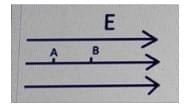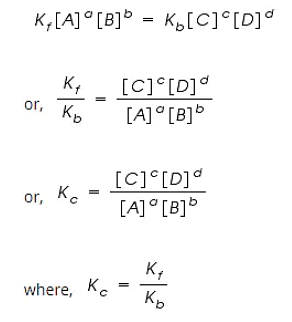Following reaction can produce three products. The order of their amount is
Following reaction can produce three products. The order of their amount is
A> C> B
C> B> A
A> B> C
C> A> B
The Correct Option is A
Solution and Explanation
The correct option is (A): A> C> B
Top Questions on Law Of Chemical Equilibrium And Equilibrium Constant
- When potassium iodide is added to an aqueous solution of potassium ferricyanide, a reversible reaction is observed in which a complex P is formed. In a strong acidic medium, the equilibrium shifts completely towards P. Addition of zinc chloride to P in a slightly acidic medium results in a sparingly soluble complex Q.
- JEE Advanced - 2024
- Chemistry
- Law Of Chemical Equilibrium And Equilibrium Constant
Which one of the following has the same number of atoms as are in 6g of H2O
- TS EAMCET - 2023
- Chemistry
- Law Of Chemical Equilibrium And Equilibrium Constant
Which of the following does not form a buffer solution?
- TS EAMCET - 2023
- Chemistry
- Law Of Chemical Equilibrium And Equilibrium Constant
- (i) $ X ( g ) \rightleftharpoons Y ( g )+ Z$ (g) $ K _{ p 1}=3$ (ii) $A ( g ) \rightleftharpoons 2 B ( g )\,\, K _{ p 2}=1$ If the degree of dissociation and initial concentration of both the reactants $X ( g )$ and $A ( g )$ are equal, then the ratio of the total pressure at equilibrium $\left(\frac{p_1}{p_2}\right)$ is equal to $x : 1$ The value of $x$ is _________ (Nearest integer)
- JEE Main - 2023
- Chemistry
- Law Of Chemical Equilibrium And Equilibrium Constant
- At 500 K, for a reversible reaction \(A_{2_{(g)}}+B_{2_{(g)}}⇌2AB_{(g)}\) in a closed container, KC = 2 × 10-5. In the presence of catalyst, the equilibrium is attaining 10 times faster. The equilibrium constant KC in the presence of catalyst at the same temperature is
- KCET - 2023
- Chemistry
- Law Of Chemical Equilibrium And Equilibrium Constant
Questions Asked in SRMJEEE exam
The molar conductivities at infinite dilution for Na2SO4,K2S04,KCl, HCl and HCOONa at 300K are 260, 308, 150, 426, and 105 S cm2 mol-1, respectively. What will be A+m for formic acid in the same unit?
- SRMJEEE - 2023
- Electrochemistry
Which of the following statement is true for aqueous solution of 0.1 M urea, 0.2 M glucose nad 0.3 M sucrose
- SRMJEEE - 2023
- Biomolecules
Electrophilic halogenation of phenol does not require catalyst because
- SRMJEEE - 2023
- Haloalkanes and Haloarenes
- Which one is the correct expression of electric potential on the axial point of a dipole whose dipole moment is р and length is 2l, at a distance of r?
- SRMJEEE - 2023
- Electrostatics
- If VA and VVB are the potentials of the two points A and B, what will be the correct relation between the electric field and the potential difference between the points? The distance between the points is d.

- SRMJEEE - 2023
- Electrostatics
Concepts Used:
Law of Chemical Equilibrium
Law of Chemical Equilibrium states that at a constant temperature, the rate of a chemical reaction is directly proportional to the product of the molar concentrations of the reactants each raised to a power equal to the corresponding stoichiometric coefficients as represented by the balanced chemical equation.
Let us consider a general reversible reaction;
A+B ↔ C+D
After some time, there is a reduction in reactants A and B and an accumulation of the products C and D. As a result, the rate of the forward reaction decreases and that of backward reaction increases.
Eventually, the two reactions occur at the same rate and a state of equilibrium is attained.
By applying the Law of Mass Action;
The rate of forward reaction;
Rf = Kf [A]a [B]b
The rate of backward reaction;
Rb = Kb [C]c [D]d
Where,
[A], [B], [C] and [D] are the concentrations of A, B, C and D at equilibrium respectively.
a, b, c, and d are the stoichiometric coefficients of A, B, C and D respectively.
Kf and Kb are the rate constants of forward and backward reactions.
However, at equilibrium,
Rate of forward reaction = Rate of backward reaction.

Kc is called the equilibrium constant expressed in terms of molar concentrations.
The above equation is known as the equation of Law of Chemical Equilibrium.



